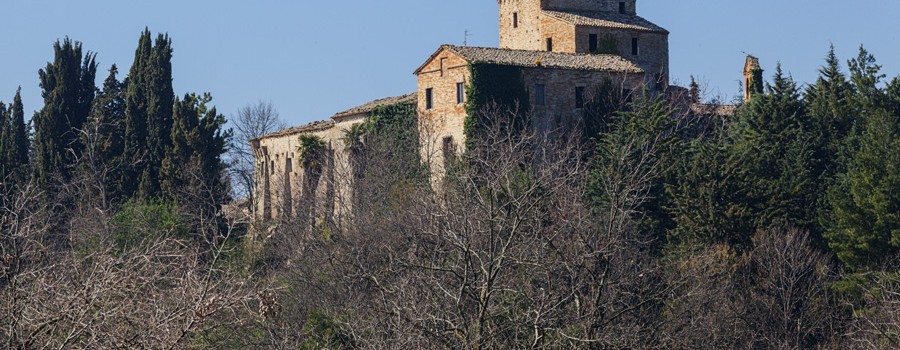Carassai is an ancient village whose two different urban districts are still visible. One is the “Castello Vecchio” of feudal origin with characteristic steep, winding alleys; the other is the “Castello Nuovo”, of Medieval origin, built in the fifteenth century by the people of Fermo, with visible remains of the fortified walls, military communication trenches built between the fourteenth and fifteenth centuries.
The church of San Lorenzo Martire, in Castello Vecchio, is built entirely in brick and documented since 1419, with a bell tower that was originally a Medieval watch tower.
The Santa Monica oratory, on the main square, a small building in the late Baroque style erected in the second half of the seventeenth century by the Santa Monica Confraternity and now used as the parish art gallery, with paintings dated from the sixteenth to the first half of the nineteenth centuries.
In 2008 Carassai opened its civic Antiquarium to the public. This small museum displays artefacts that prove human presence in the Carassai district since the Neolithic Age. The rooms display prehistoric, Picene and, above all, Roman relics found in a series of necropolises. Of particular interest is some bronze jewellery, several Roman coins and an funerary epigraphic inscription in Latin.
Leaving Carassai, 4 kilometres from the centre, we meet the Rocca di Montevarmine, a fourteenth-century Medieval castle with tenth-century remains that suggest Lombard origins. With its mighty walls and tall tower (35 metres) with swallowtail battlements, the castle is one of the few still intact in the Marche. From the tower we can enjoy a unique landscape, which draws the eye from the neighbouring hills to the sea.




















